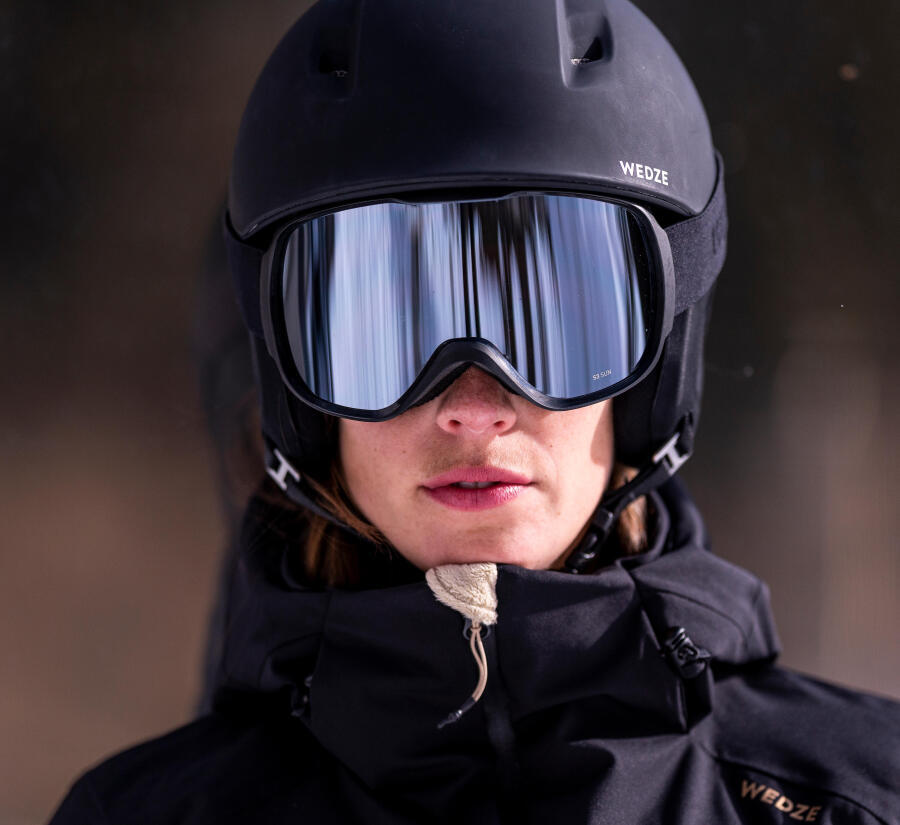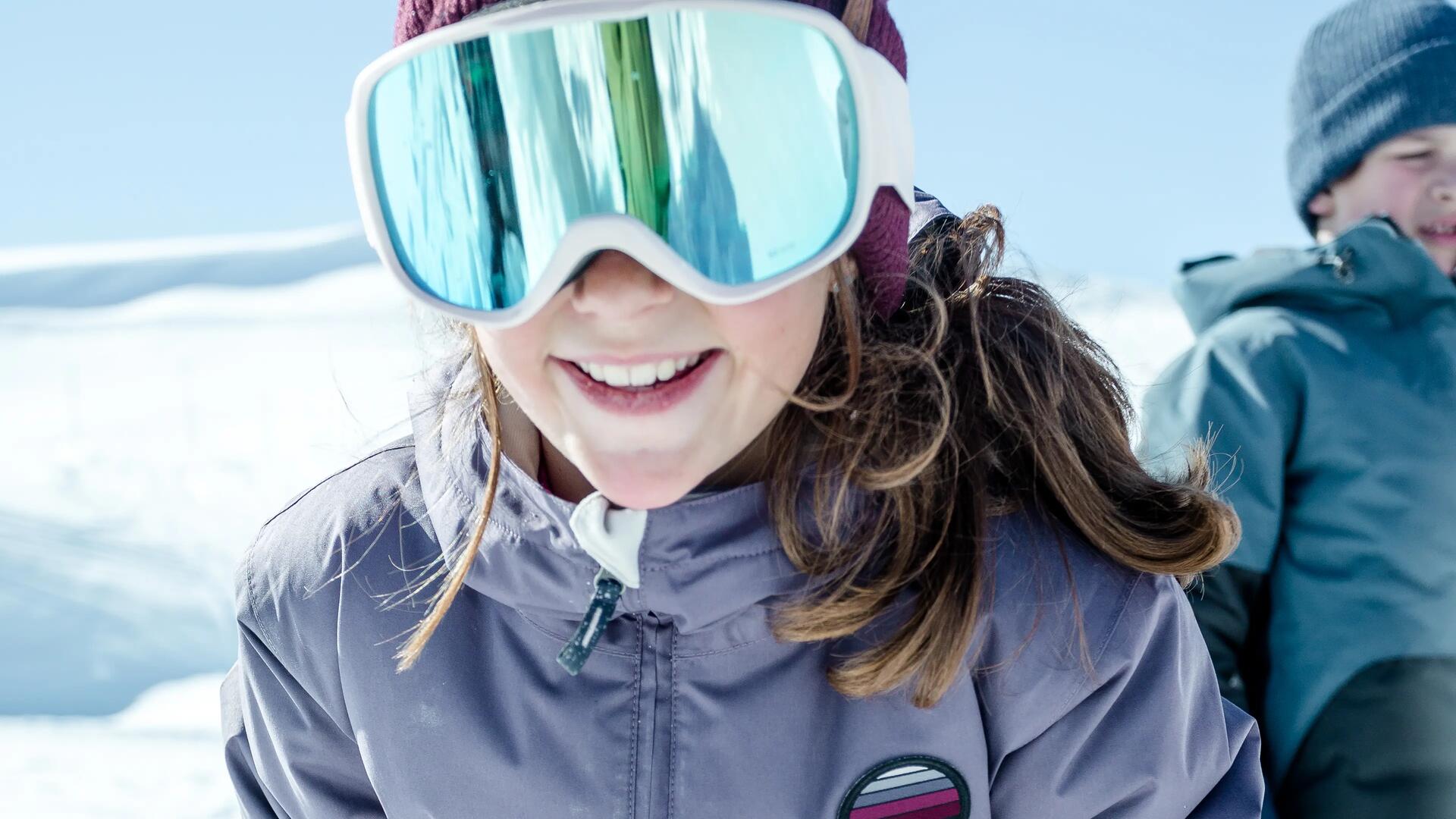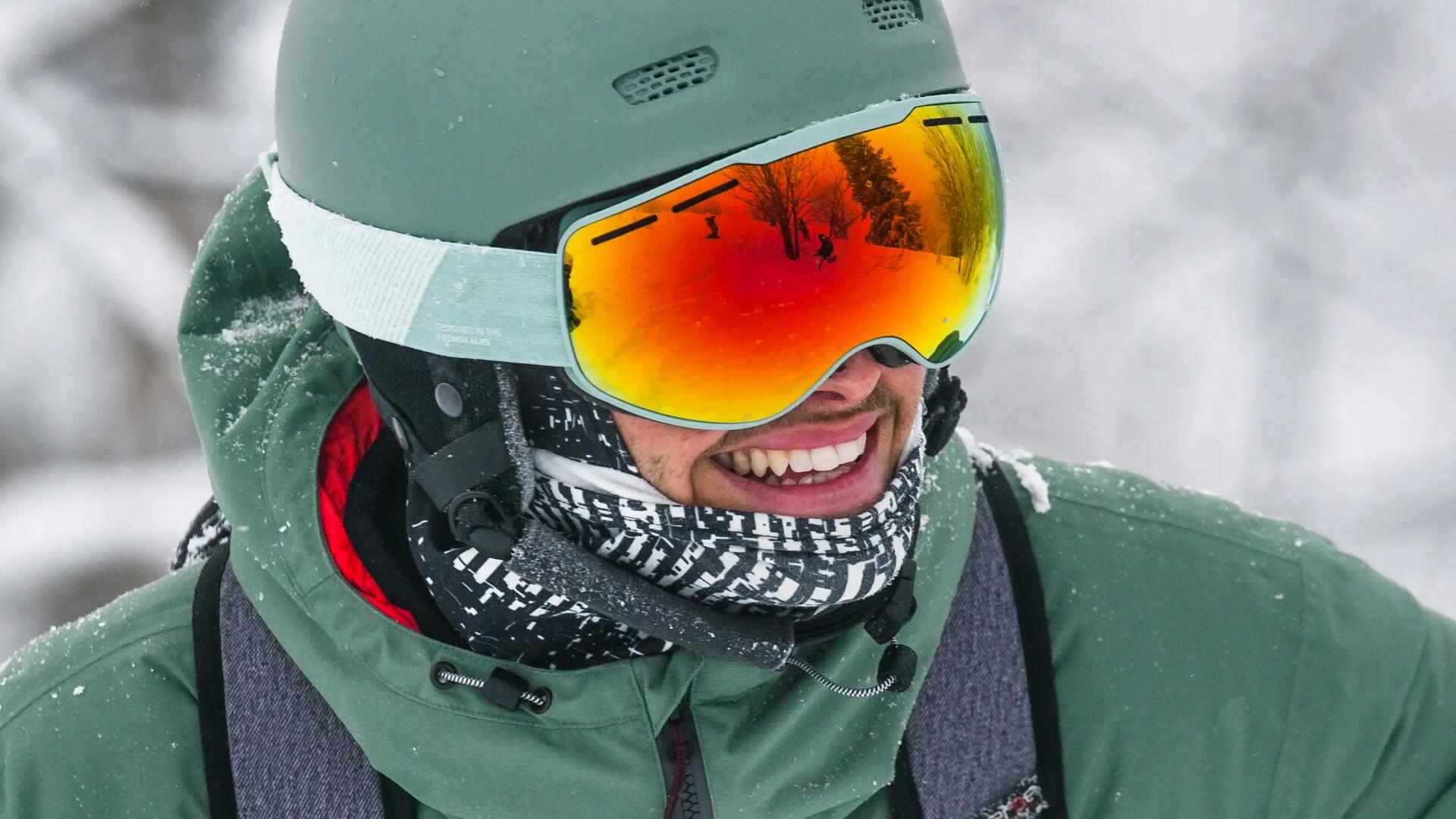Weather conditions
All ski and snowboard goggles offer maximum sun protection and are certified 100% anti-UV. With this in mind, what are the conditions in which you generally ski?

Skiing and snowboarding enthusiasts agree: having improved visibility on the slopes is not only safer, but makes the sport more fun. Here are the criteria to consider before buying a new pair of goggles.
All ski and snowboard goggles offer maximum sun protection and are certified 100% anti-UV. With this in mind, what are the conditions in which you generally ski?

Good visibility: sunny and cloudy weather
Dark goggles will ensure a good field of vision during sunny or cloudy days. As such, this type of lens offers optimal visibility during clear days on the slopes.
Reduced visibility: foggy or stormy weather
Clear, yellow-coloured lenses will highlight the reliefs of the slopes during descents in storms or in foggy weather. This type of lens is essential in the most challenging of weather conditions.
Inconsistent visibility: unpredictable weather conditions
Removable lenses allow you to swap out the lens tint according to changes in the weather. In technical terms, photochromatic or electro-photochromatic lenses are a dynamic solution to address all possible weather conditions.

All ski and snowboarding goggles feature an anti-fog coating to ensure clear vision on the slopes. Read on to find the best anti-fog goggles for you.
Tip: Make sure that the goggle vents are not covered by a neck warmer or a scarf. Try to avoid rubbing or scratching the interior of your goggles. Instead, wipe the inside carefully; this will protect and maintain the effectiveness of the anti-fog coating for as long as possible. When you’re finished using your goggles, make sure to dry them completely.
“Essential” anti-fog goggles
Double-lens goggles are treated internally with anti-fog coating.
“High Performance” anti-fog goggles
Ventilated double-lens goggles feature interior anti-fog coating; the additional ventilation feature further reduces moisture build-up.

There are two size options: Size S (Small) and Size L (Large). You should select the size according to the structure and size of your face as well as whether or not you require prescription glasses.
Size S
This is the ideal size for children and for those whose faces are elongated and/or narrow.
Size L
This is the perfect model for those whose faces are larger and/or square.
If you ski with prescription glasses, we recommend choosing the OTG (Over the Glasses) models, which are designed expressly for this purpose. You may also wish to visit a Decathlon store in person in order to try on the mask with your prescription glasses.